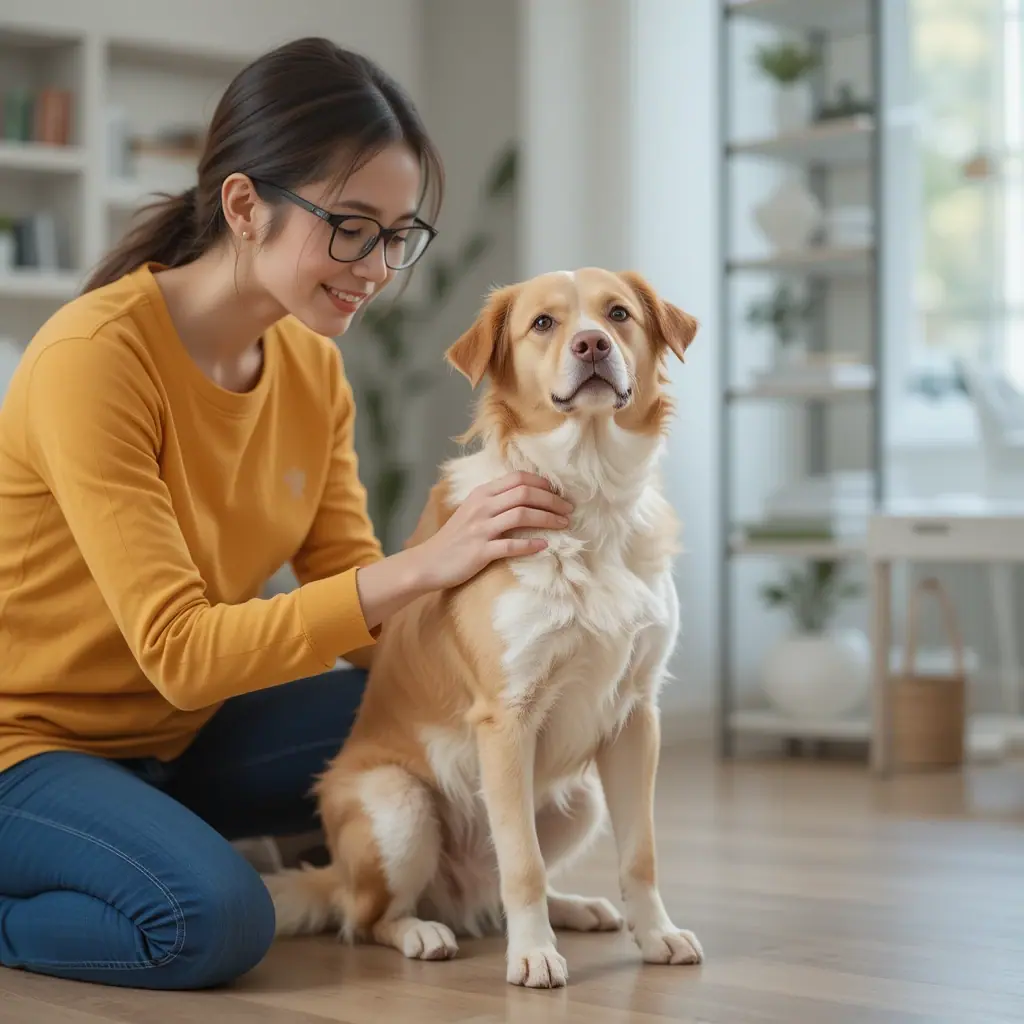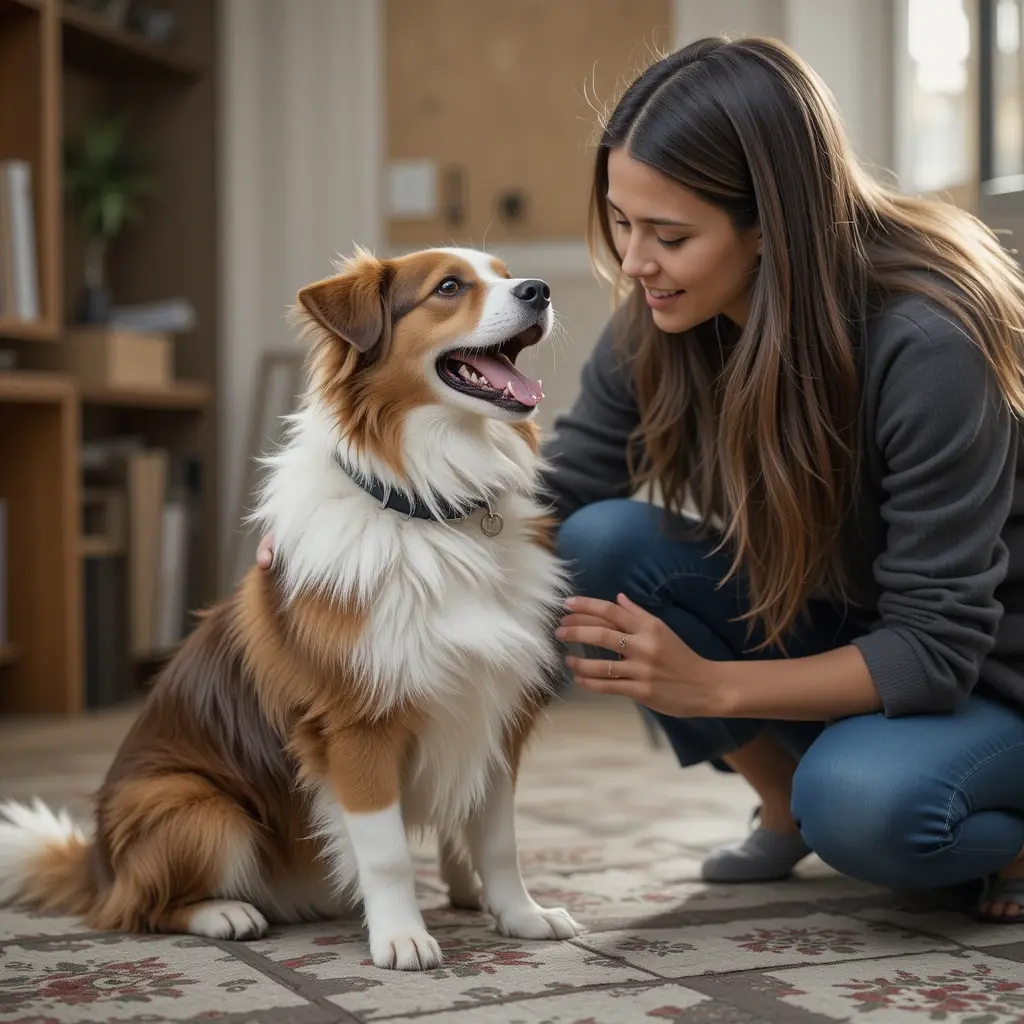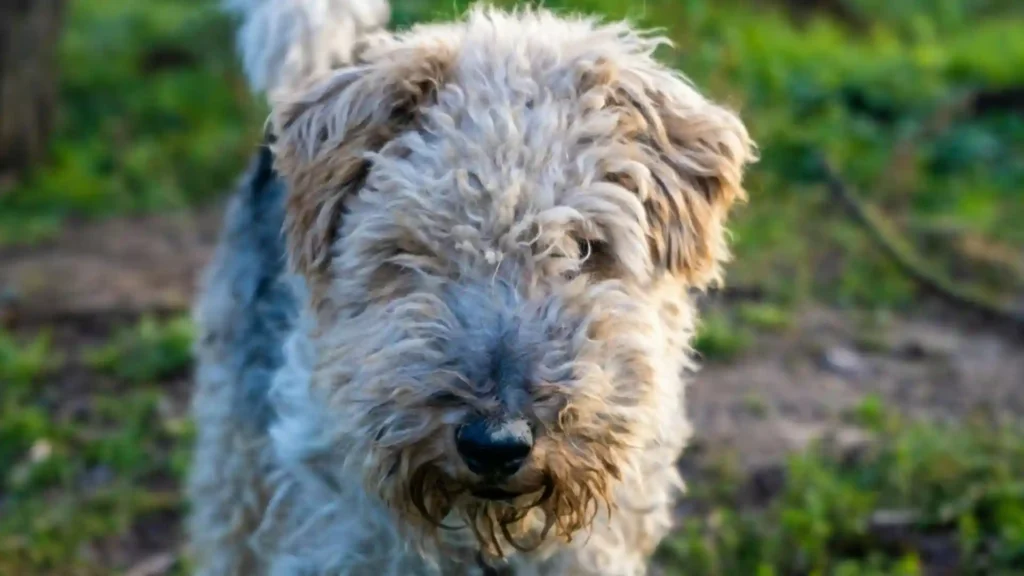Teach your dog basic obedience commands for building a strong relationship. It is an undeniable training for your dog for the overall well-being. The basic commands lay the foundation for good behavior and effective communication between you and your dog. How do you teach your dog the basic commands require patience, consistency, and the right techniques. By doing these, you can teach your dog to respond reliably.
Start with the Basics Commands
The first step in teaching your dog obedience is focusing on foundational commands. These basic commands help establish clear communication. Here are some key commands to start with:
Sit: Teaching your dog to sit is one of the easiest commands and provides a way to keep them calm. For example, you can use “sit” to prevent jumping. Say “sit” to settle your dog before mealtime.
Stay: The “stay” command teaches your dog impulse control. This is useful to ensure safety. You can use this command to stop your dog from running into traffic, or use it to prohibit from other activities.
Come: A strong recall command. This ensures that your dog will return to you promptly when called. This is vital for off-leash activities, and emergencies.
Down: Teaching your dog to lie down encourages relaxation. It is used in situations where they need to settle for longer periods. It’s particularly helpful during family meals, and at outdoor cafés.
Leave It: The “leave it” command helps prevent your dog from picking up something dangerous or unhealthy.
By focusing on these commands, you lay the groundwork for more advanced training.
Use Appropriate Tools
Before starting training, it’s essential to have the right tools to ensure your sessions are effective.
Treats: Treats are the cornerstone of positive reinforcement training. Always make sure the treat is right for the situation. Using the right treats make a significant difference in keeping your dog motivated and engaged. Choose small, soft treats that your dog loves. Aim for bite-sized pieces that your dog can consume quickly. Mix up the treats. It keeps them attentive during training sessions.
Clicker: A clicker is a small handheld device. It makes clicking sound when pressed. It’s a useful tool for marking the exact moment your dog performs the desired behavior. The click sound helps your dog understand the desired action. Pair the clicker with treats initially (click, then treat) so your dog learns to associate the sound with a reward.
Leash and Collar: Use 4–6-foot leash for training exercises. Avoid retractable leashes as they can interfere with control. A flat buckle collar is sufficient. Ensure it fits snugly with comfort.
Use Positive Reinforcement
Positive reinforcement encourages your dog to repeat good behavior. Here’s how to apply this method effectively:
Reward for Correct Actions: Reward your dog immediately after performing a desired behavior. They can make a connection between the action and the reward. If teaching “sit,” give the treat as soon as your dog’s bottom touches the ground. If teaching “come,” reward as soon as they reach you.
Types of Rewards: You can reward your dog by praising and giving treats.
Praise: Use warm praise. Say “Good boy!” or “Well done!” Dogs respond well to the positive tone of your voice.
Treats: Give your dogs treats after each good action. Keep treats handy during training sessions.
Toys: For dogs that are less food-driven, give them toys as a reward.
Affection: A pat, belly rub, or cuddle can also be rewarding.
Keep Rewards Consistent
Reward your dog every time they perform the desired behavior. In early stages of training, this brings positive output. As they master the command, gradually reduce treats while maintaining praise and other forms of reward.
Celebrate Small Wins
Dogs thrive on encouragement and positive interactions. So, celebrate each small wins.
Practice Consistency for Fairer Commands

Consistency is key to effective dog training. Use predictable behaviors for better outcomes. A consistent method of training reduces confusion and improves responsiveness. Here’s how to maintain consistency in your training approach:
Use the Same Command Word Every Time: Stick to one simple word for each command. For example: Use “sit,” not “sit down” nor “have a seat.” Say “stay,” not “stay there” nor “hold on.” This clarity helps your dog associate a specific word with a specific action.
Keep Your Tone Consistent: The tone of your voice matters. Use a firm, clear, and neutral tone. Avoid asking tone as a command. During praise, be enthusiastic and happy. Stay calm and neutral if your dog doesn’t respond correctly. Avoid yelling.
Be Consistent with Gestures: Pair verbal commands with the same hand signals every time. For example: Use a downward motion with your hand for “sit.” This consistency makes it easier for your dog to understand your command.
Enforce Commands Across Situations: Practice commands in a variety of settings to reinforce consistency. For example: Teach “sit” both at home and in a park. Use “stay” when indoors or near a busy street.
Stick to a Routine: Dogs thrive on routine. Practice commands at the same times daily. Use the same command at the same time before meals and walks. Consistent practice reinforces learning.
Keep Training Sessions Short
Dogs have limited attention spans. A short training session brings more benefit for learning. Use an strategical methods for the training so that your dog can learn in this short period.
Train for 5–10 Minutes at a Time: Sessions that are too long can lead to boredom. Short, focused sessions ensure your dog is attentive and eager to learn. Multiple short sessions throughout the day are effective. Aim for 2–4 sessions depending on your dog’s age and energy level. Use natural opportunities to train your dog. It is spontaneous and gives your dog a great opportunity to learn naturally.
End on a Positive Note: End the session with praise and a reward. This leaves them feeling accomplished and eager for the next session. If your dog struggles, simplify the task. Understand their expertise, and reward their effort before ending. For instance, if they can’t master “stay,” go back to a simpler command like “sit” and reward them for doing that correctly.
Adapt to Your Dog’s Needs: Puppies and easily distracted Dogs may benefit from shorter sessions. For High-Energy Dogs, give them some exercise.
Monitor Your Dog’s Reactions: A wagging tail, attentive eyes, and a willingness to respond indicate your dog is enjoying the session. If your dog seems distracted, it’s time to wrap up and try again later.
Never More Than a Single Command at a Time
Hold a treat close to your dog’s nose. Move your hand upward, allowing your dog’s head to follow, which will naturally cause their bottom to lower. Once they sit, say “sit” and give the treat.
Ask your dog to sit. Open your palm in front of their face and say “stay.” Take a step back. If they stay, reward them. Gradually increase the distance and time.
Use a leash if needed. Squat down, open your arms, and say “come” in an excited tone. Reward as soon as they come to you.
Start with your dog in the sitting position. Hold a treat near their nose and slowly lower it to the ground. Say “down” as their body lowers and reward them.
Incorporate commands into daily routine

Use daily opportunities. This creates consistent opportunities for your dog to practice.
Before Meals or Going Outside: Before placing your dog’s food bowl on the floor, ask them to “sit” and wait calmly. Only release them to eat with a command like “okay” or “go ahead.” Before going outside, ask your dog to “sit” to prevent them from rushing out.
Entering a Room or Crossing a Street: If your dog tends to follow you everywhere, use “stay” at the doorway. This helps teach impulse control and gives you a chance to enter first. Before stepping off the curb, ask your dog to “stay” while you check for traffic. Once it’s safe, release them with a command like “let’s go.”
During Walks or Playtime: Use “leave it” to redirect their attention. Reward them for complying. Use “leave it” command to teach them to drop a toy during fetch and tug-of-war.
During Everyday Interactions: Call your dog to you using the “come” command when moving to another room. Reward them each time they come to you.
Calm Them in Busy Situations: If your dog is overly excited, ask them to “down” to settle near your feet while you eat or talk with guests. Use “down” command to help your dog relax in a café, park, and other busy environment.
Gradually Add Distractions
Distractions provides immediate relief. Train your dog in a variety of environments to get relief from intense situations. Increase the level of distraction after each session. Dogs need to learn how to listen in the face of distractions, whatever they may be.
Start in a Quiet Environment: Begin training in a familiar location. Then move to challenging environments. Introduce mild distractions at home. Use Animals, food, toys, other dogs, and moving objects as distractions. Once your dog succeeds indoors, move training to your backyard. There may be minor distractions like birds and passing cars.
Practice in New Locations: Train your dog in a quiet corner of the park before gradually moving closer to busier areas with other dogs and people. After completing this training sessions, practice commands near sidewalks and intersections. This helps the dog to be used to with sounds of traffic and pedestrians. Take an opportunity to test your dog’s obedience amid a variety of sights, sounds, and smells.
Increase the Difficulty in Steps: Start with basic distractions, such as people walking by at a distance or distant noises. Gradually increase to moderate distractions, like a person jogging past, children playing, or other dogs in sight. Progress to high-level distractions, such as squirrels, loud noises, and a busy playground.
Be Patient and Leave Frustration
Training a dog requires understanding, and persistence. Staying patient is key to helping your dog succeed.
Understand Your Dog’s Learning Pace: Some dogs pick up commands quickly. Breed, age, and temperament influence how fast they learn. Set achievable goals based on your dog’s abilities and progress.
Stay Calm During Setbacks: Dogs can sense your emotions. Your frustration may be harmful for their learning. If training isn’t going well, pause the session and try again later. Return to an easier version of the exercise, if your dog can’t cop up.
Keep a Positive Attitude: Instead of dwelling on what your dog hasn’t learned, appreciate what they’ve already achieved. Incorporate games and play into training sessions to keep your dog engaged and motivated.
Seek Professional Help When Necessaryy
Training a dog is sometimes challenging. Seek professional help if you can’t address the situation by yourself. A professional can provide you valuable support to make your dog’s training effective.
Consider a Professional Trainer: Seek trainers certified by organizations such as the International Association of Canine Professionals (IACP), Certification Council for Professional Dog Trainers (CCPDT), or similar reputable groups. A professional dog trainer can assess your dog’s behavior and create a training plan tailored to their specific needs. Trainers are skilled in addressing common issues such as leash pulling, jumping, and excessive barking.
Explore Group Classes: Group classes allow your dog to interact with other dogs and people, improving their social skills. Classes follow a curriculum that teaches foundational obedience skills in a controlled setting.
Research Online Resources: Platforms like YouTube and training websites offer step-by-step tutorials for common commands and behaviors. Many books on dog training provide expert advice on handling specific challenges.
When to Seek Help: If your dog exhibits aggression, extreme fear, and destructive behaviors, meet the professionals. Seek the help, if your dog isn’t responding to training.
Training your dog is a rewarding process. It rewards you with the bonding. By using various methods of training, you can ensure your dog learns key commands in a fun and effective way.




